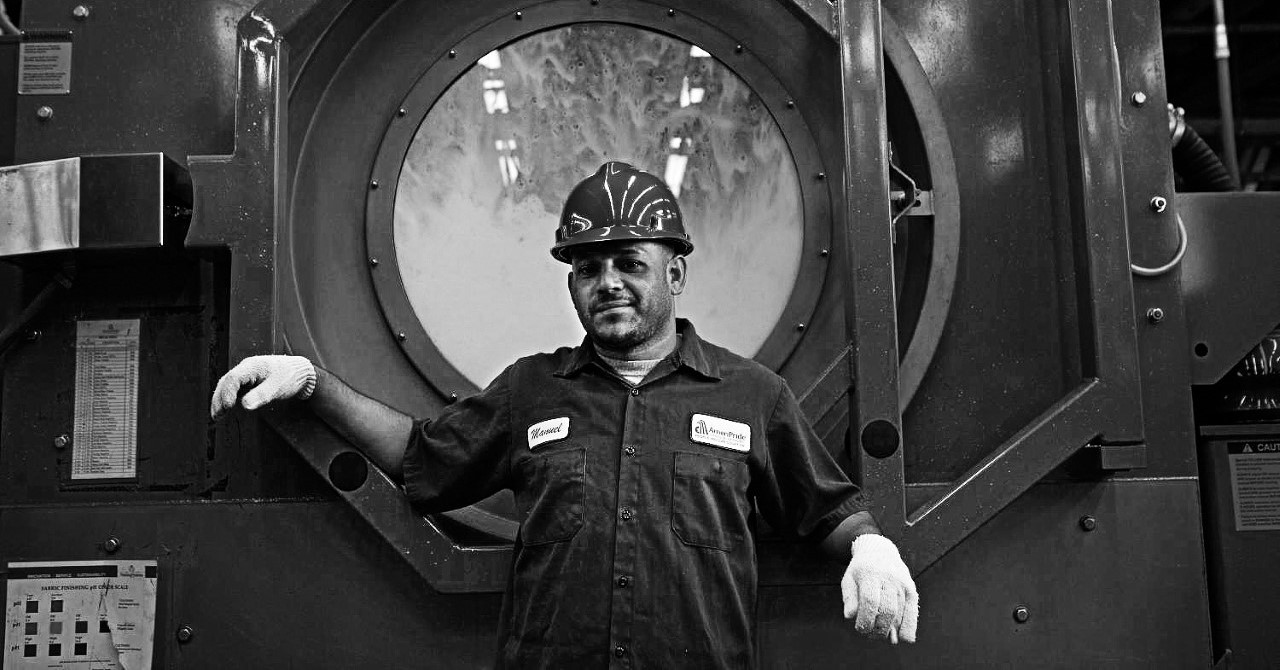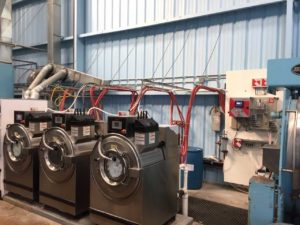
By: John Goetz, Global Product Manager, Hydro Systems Company.
In Part 1 of Chemical Dispensing Systems and Choosing the Right One we looked at the importance of chemical dispensing systems in your laundry and reviewed how to select the right system for your facility. Today we’ll look at how chemical dispensing system technology is evolving.
The Future of Laundry
In addition to proper selection and maintenance of chemical dispensing systems, it’s important for managers to understand how technology is evolving and the impact this will have on laundry operations. The Internet of Things (IoT) is a network of physical devices that can be accessed using the Internet and send and receive data in real time. The IoT is having a positive effect on many industries and is poised for incredible growth. In fact, recent research looking across industries reports the number of devices connected to the IoT will grow from the 15.4 billion devices in 2015 to 75.4 billion in 2025.
According to a study by the Boston Consulting Group, there are numerous use cases for the IoT that are on track to experience widespread adoption in the next several years. One of these areas, which ties closely to the laundry industry, is self-optimizing production. Connected factories and plants can rely on the IoT to track and optimize production processes in real-time. For instance, automated adjustments to dispense chemical based on feedback from a flow meter can improve quality and efficiency while reducing costs and waste.
 Today’s chemical dispensers that utilize the power of the IoT are focused on remote monitoring. These connected devices alert laundry managers to issues during the wash process to reduce downtime. They also deliver data to provide greater insight about important information, such as chemical consumption. To ensure this critical information is received immediately, most facilities use a cellular modem when installing a connected chemical dispenser so that they don’t have to rely on the local WI-FI connection.
Today’s chemical dispensers that utilize the power of the IoT are focused on remote monitoring. These connected devices alert laundry managers to issues during the wash process to reduce downtime. They also deliver data to provide greater insight about important information, such as chemical consumption. To ensure this critical information is received immediately, most facilities use a cellular modem when installing a connected chemical dispenser so that they don’t have to rely on the local WI-FI connection.
Despite offering enhanced visibility to managers, connected chemical dispensers still have room to grow and evolve. Eventually, dispensers could be used to provide predictive maintenance on downstream equipment such as the washer or on the dispenser itself by analyzing data and recommending maintenance before issues arise. Dispensers may also be able to conduct automated inventory management by integrating chemical usage data into enterprise (ERP) or customer relationship management (CRM) software packages. For example, if a system detects a certain amount of chemical usage below a threshold, it could automatically trigger an order for more chemical.
It’s likely that in addition to these improvements to dispenser technology, manufacturers of the solutions will expand their services to include analyzing and interpreting data for laundry facilities. With so much data at their fingertips, managers may be overwhelmed. Companies that can consult and educate users of IoT dispensing systems can help laundry operators and chemical suppliers run their businesses more efficiently. For example, a manufacturer may recommend additional staff training if a dispenser is reporting a high number of “unfinished cycle” alarms, as this could mean that employees are manually advancing the washer program before loads are completed.
Dispensing Done Right
Laundry operations of all sizes take their responsibilities very seriously, and thus need the right processes and equipment in place. Chemical dispensing systems are essential additions to these laundry facilities because they help eliminate waste, reduce costs, improve productivity and enhance safety. These systems also ensure that linen is sanitary and stays looking, smelling and feeling great over the course of its life.
 Laundry managers should take time to research different systems so that they select the appropriate dispenser for their facility and maximize the benefits. Dispensing systems that have the numerous must-have features outlined above will reduce unnecessary headaches, as they are easier to install, use and maintain. Today, there are more advanced options available that utilize the power of the Internet of Things and provide greater visibility of the wash process. IoT-connected dispensers can significantly improve efficiency and reduce costs within laundry facilities. Future improvements will only continue to add new capabilities that will help laundries clean with confidence during every wash.
Laundry managers should take time to research different systems so that they select the appropriate dispenser for their facility and maximize the benefits. Dispensing systems that have the numerous must-have features outlined above will reduce unnecessary headaches, as they are easier to install, use and maintain. Today, there are more advanced options available that utilize the power of the Internet of Things and provide greater visibility of the wash process. IoT-connected dispensers can significantly improve efficiency and reduce costs within laundry facilities. Future improvements will only continue to add new capabilities that will help laundries clean with confidence during every wash.
About the author:
John Goetz is a Global Product Manager for Hydro Systems, the world’s largest independent manufacturer of chemical injecting, proportioning, dispensing and medicating equipment. He is responsible for the strategic direction, product development roadmap, pricing and P&L of Hydro’s multi-million dollar Laundry & Kitchen dispensing portfolio. For more information, visit http://hydrosystemsco.com or contact John at jgoetz@hydrosystemsco.com. Shown above is Hydro’s FM-800 Flush Manifold












